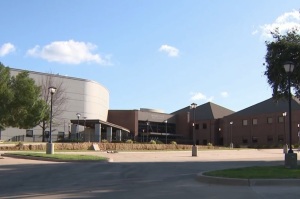Recovery of Ritual – Biola University Displays Challenges of Christianity
LA MIRADA, Ca. -- A list of “ten reasons to dislike your church” hangs near the entrance of Biola University’s new exhibition on the future of Christianity. Among them are: “It’s comfortable in its misery and is looking for company." "It's all about the money." "It's concerned with look and not action." These reasons reflect the struggles faced by pastors while attracting and evangelizing modern day youths.
"In the past, we could have a convert in an hour," said Doug Haag, the pastor of First Evangelical Free Church of Fullerton, who attended the exhibition's opening night and was impressed enough to return the next day with five of his pastors. "Now, people want to see an authentic community first."
The exhibit, “Recovery of Ritual” is the result of a joint research project by Biola University’s Richard Flory and University of Southern California’s Donald Miller. Over the last year, the two professors have observed the difficulties faced by the Christian Church in postmodern America, and the various methods used by the church to attract believers. They plan to turn their findings into a book by the end of the year. The two scholars also hope to produce an interactive CD and updated information online.
"This show tells you Christianity is alive and thriving and able to respond to the culture," said Donald E. Miller, executive director of the USC Center for Religion and Civic Culture. "These people don't care about buildings. They care about the faith."
The methods used by Pastors were loosely categorized into four sections, each set up on the corners of the gallery.
The first approach, called, “Reactors” is described as people using "nostalgic efforts that focus on the recovery of reason, seeking to roll back the clock on our postmodern culture." A small television that shows talking head shots of theologians and pastors defending Christianity through the use of scripture sits as the centerpiece of the section.
A tiny electric train with three parts – “facts” as its engine, “faith” as the second car, and “Feeling” as its end, loops around the Television.
The wall beyond the centerpiece displays political cartoons from the 1920s, magazines from the 1950s and current books, all hinting that the only hope left for Christianity against modern culture is hammering away at biblical truths.
Although the museum displayed the section with purposeful disdain, many do not understand the derisive approach. A recent visitor to the gallery, upon seeing outdated tracts and pamphlets on ‘how to become a Christian,’ offered the museum updated versions.
"It's really in the eye of the beholder," Miller said.
The next section, “the Imitators” displays examples of churches and pastors integrating a Christian message into popular culture. Examples include a video of “Harvest Monday Nights With Greg Laurie,” a show hosted by the founder of Harvest Crusade, which mimics the style of MTV. On the wall hands a photo essay of a coffeehouse and bookstore at the Mariners Church in Irvine, which is modeled after Borders.
"This is about the consumption of religion," said Flory, an associate professor of sociology who teamed with Miller to edit a book in 2000 titled "GenX Religion."
The third section, labeled, “Reappropriate” demonstrates the thirst for orthodoxy in the youth. Videos, photos, and text of candles, incense, liturgies and vestments embellish this corner.
"These are usually highly educated people who are intrigued by the church's sense of history," Miller said. "They are seeking anchorage in a tradition in this postmodern world."
In the last corner sits an annex with three easels marked “Mystery," "Grace," and "Paradox.” This section, named, “Innovators” mimics the movement made up mostly of lay people attempting to find ‘innovative’ ways to develop a church.
The main focus of the innovators is to form intimate communities, then, finding ways to reconnect the body to worship services; fellowship first, then the church. The group lights candles, burn incense, paint, and dance during services to connect themselves as one body that breathes as a unit.
Some examples of innovators include the Bridge Communities in Ventura and the Grace Brethren Church in Long Beach. To these believers, faith is not limited to bricks and mortar; the faithful can meet anywhere, from coffeehouses to bars. The innovators view their churches and communities as living organisms that experience birth, life, and death.
For the "Innovators," bricks and mortar don't matter, and large is bad. The faithful can meet anywhere, from coffeehouses to bars.
"The idea is, you need to reinvent the church to be adaptable to contemporary culture," Miller said.
The annex, which mimics such a community, gives the visitors a chance to interact; those willing, are allowed to paint on the easels while their work is videotaped. The used canvases are regularly replaced by the museum.
Jason Whalen, who ministers to post-college adults at the First Evangelical Free Church of Fullerton, believes the dsplay, minus the “reactors” correctly display the future of Chritianity.
"It's all about the search for authenticity," Whalen said. "Be what you say you are.
“Recovery of Ritual” will be displayed through the end of February.
By Paulina C.




























